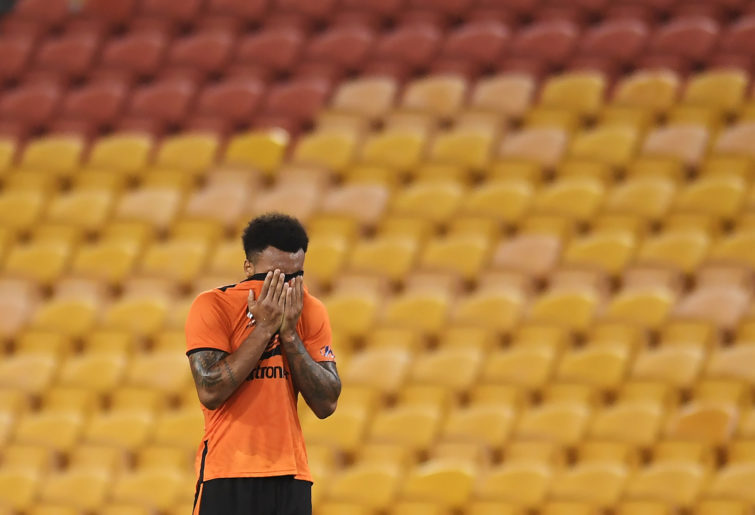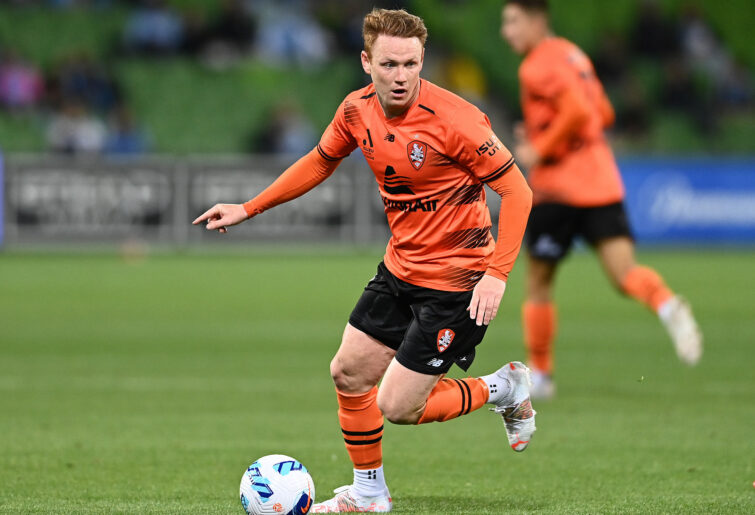338
new author
Roar Rookie
Opinion

The announcement of the A-League finals being moved to Sydney for the next three years needs no introduction; the decision clearly based on a number of clubs desire for an instant cash injection.
However, details on how the money will be used are scant.
The proposed advantage of the move being a ‘festival of football’ in Sydney aimed at bringing more fans into the game. This against the many well documented disadvantages expressed on this website and elsewhere.
The process has certainly highlighted a lack of communication with fans, but somewhat more surprisingly, with all A-League club owners.
Corporate governance issues have also been alluded to in a recent news article regarding management of conflict of interest matters. None of this instils much confidence in the running of the game Australia.
Since I started writing this piece following the grand final announcement, things have gotten worse for the ALM. The pitch invasion at the City versus Victory match has been an obvious lightening rod for further problems, but make no mistake, the league in some places has been playing ‘hard to want’ for a while now.
I speak predominantly from experience in Brisbane over the last 20 plus years.
With a number of friends I have been a supporter of Brisbane Roar, one of the ‘regional clubs’ located outside of Sydney, for a long time and some of us watched the Strikers go round in the NSL before that.
We’ve all played the game, coached youth, men and women’s teams, and had our kids play. We are probably typical of the supporters rusted on to the game of football in Australia that jumped into the A league when it kicked off.
Like most people, I am at a bit of a loss as to how the move of the grand final will benefit clubs like the Roar. How will moving the centrepiece event, that has drawn over 50 000 people, on three separate occasions at Suncorp Stadium, to Sydney, encourage more people to attend a grand final or Brisbane Roar games during the regular season?
What is the strategy that the APL will employ to drive increased membership for the non-Sydney clubs as part of this move?
It is clear from the various releases put out by some of the clubs and the APL itself, that the losses suffered by club owners was a major part of the thinking behind this latest move.
But what introspection has occurred by those owners ? Why can’t they get more fans to games and therefore make more money – surely the answer to that question lies close to home and isn’t ‘we need to have the Club’s grand final held in Sydney’.
Could it be that club owners and the APL aren’t listening closely to fans, and aren’t working together enough to iron out issues like scheduling?
In Brisbane’s case, it is abundantly clear that for a decade the club was able to draw average crowds of 14 000 spectators, since then it has shed almost 8,000 of those fans. The club must take some responsibility for this decline.

(Albert Perez/Getty Images)
Moving the Grand Final to Sydney might bring Brisbane Roar a slice of NSW taxpayers’ hard earned for doing nothing, but based on current trends at Brisbane, any expectation Danny Townsend may have of the club using NSW taxes to improve club membership and attendance at Brisbane Roar appear overly optimistic.
In pulling together information to include in a direct letter expressing my views on the decision to move the Grand Final to Sydney, I looked back on footage of past games in Brisbane.
What struck me was really how far we have fallen slowly but surely over the years – a little like the frog being boiled in the slowly heated water in a saucepan on the stove.
I have lamented previously on this site that the move to Redcliffe, while personally more convenient for me than travelling to Suncorp Stadium, was much less convenient for the five other members I used to attend games with.
Consequently, our attendance as a group stopped. I replaced my membership with a Paramount+ subscription and occasionally go to games at Redcliffe – the others do neither and are no longer members of Roar, nor do they attend any games or watch anything other than the occasional free to air game.
While the move to Redcliffe was a deal breaker, these previously rusted on supporters were over time becoming more dissatisfied and are now lost to the Club and the game in Brisbane.
It will surprise nobody in Brisbane that attendance figures (excluding finals) confirm the decline in attendance at Roar games over time.

(Photo by Quinn Rooney/Getty Images)
For the period between 2005/6 – 2016/17 attendance averaged 14,302 per game. From 17/18 to 19/20 (pre-covid) attendance fell to an average of 9117 per game and 20/21 to current season average attendance is 5613.
Which brings me back to the decision to host the finals in Sydney. This decision is a further indication that A-League administrators are not listening or understanding the fans.
From a Roar perspective it adds to further issues already contributing to decline in support at games – the move the Redcliffe being a recent source of problems, which is further compounded by scheduling.
This season two thirds of the 12 home games this year at times that require people to either a) battle through peak hour traffic on the highly congested roads leading north of Brisbane on Friday afternoon or b) experience the burn of the Queensland sun for two hours from 2pm or 4pm with 75% of Kayo Stadium offering no shade and the unshaded viewing area facing due west – directly into the afternoon sun.
Neither of these situations lends itself to a positive ‘game day experience’ and I’m not surprised that, even if people are close enough to the stadium to make the effort to get to games live, they probably instead only attend the remaining third of games that are scheduled on the weekend (no gridlock) with a kick off in the evening (no need for a sombrero, sunglasses, 2L jug of cold water and SPF 50+).
Decisions like the move to Redcliffe, fixtures that are not locked in home then away arrangements, the scheduling of games without understanding the on-ground realities for people attending games and the recent shifting of the grand final to Sydney have an ongoing and cumulative corrosive effect of the support base.
Other issues for other clubs have also been well documented on this site over time and I’m sure there are local issues at other clubs that if resolved would greatly improve the ‘game day experience’ we hear so much about being the defining thing that sets football apart from other codes.
Furthermore, governments of all stripes in Australia have recognised the risks of increasing temperatures on all sporting codes – both for players and spectators and support development of climate change adaptation strategies to address these problems. It is probably something the APL and broadcasters also need to work together on.
If the competition is going to continue to be played in the Australian summer then kick off times might need to be no earlier than 5.30 in the afternoon – when things will start to cool off a bit (for players and spectators) and kids can still attend games without being out too late.
I’d love to be more confident that football administration and club owners in this country can deliver what we have all been hoping for (a well-supported professional league), but I just can’t get past the evidence of the last 15 years that despite players and fans doing their bit it’s just not enough.
We have just blown the benefit of the Men’s World Cup with the handling of the relocated grand final and the unfortunate response by a handful of fools in Melbourne. However, around the corner we have the Women’s World Cup and then the Olympics coming, opportunities other sports could only dream of being able to leverage off, but I’m willing to bet these events will come and go and no lasting benefit for professional football in Australia will be achieved.
I challenge football administrators and club owners to prove me wrong. I challenge football administrators to embrace accountability and publicly release a detailed plan for the game, with a timetable and metrics and deliverables. I challenge football administrators and owners to draw a line in the sand now and publicly commit to doing better – it really shouldn’t be this hard.